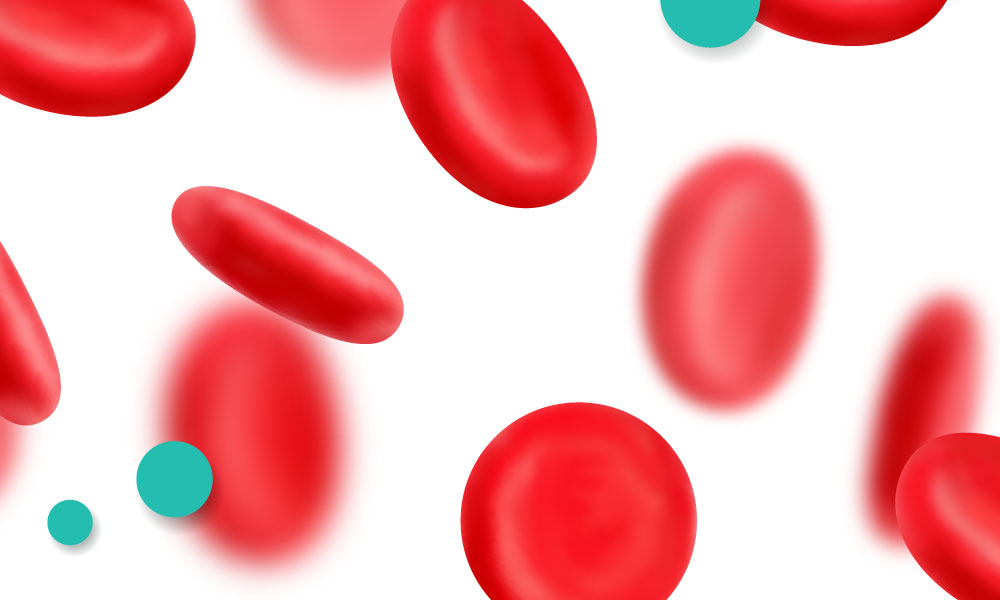Originally published in LabTalk (Volume 3, Issue 3, 2008), the quarterly newsletter of Aculabs.
Prothrombin time (PT) tests measure clotting time in a blood sample from the activation of factor VII through the formation of fibrin clot. PT evaluates the integrity of the extrinsic and common pathways of coagulation. It is measured in seconds and is compared to values in healthy individuals.
Abnormal PT can be hereditary due to deficiency of factor VII, fibrinogen or factors II, V or X. It can also be acquired due to liver dysfunction, vitamin K (as multivitamin supplement or in food like beef, green tea, broccoli, chickpeas, kale, turnip greens, and soybean products), Warfarin (drinking cranberry juice may increase the effect of Warfarin), DIC, Lupus anticoagulants, heparin, hirudin or argatroban and specific factor inhibitors. The most common use for PT is to monitor the effectiveness of anticoagulant therapy, which must be monitored very carefully to maintain the balance between bleeding and clotting.
Because the reagents and instruments used to perform the PT test vary from one laboratory to another, and even within the same laboratory over time, the values also fluctuate which creates a big problem for the physician’s management of their patients reliably. To standardize the results, the World Health Organization (WHO) recommended the use of Internationalized Normalized Ratio (INR) with the PT test for patients receiving blood-thinning medication. INR is a method of standardization in an effort to eliminate inter-manufacturer discrepancies. WHO has developed a protocol where all thromboplastin reagents are calibrated in comparison with a standard by means of an International Sensitivity Index (ISI).
The purpose of the INR is to improve standardization of results obtained from different PT reagents, because various PT reagents have different sensitivities (ISI). A low ISI (as low as approximately 1) represents a sensitive reagent. A higher ISI (up to about 2 – 3) represents a less sensitive reagent. INR is calculated from the PT and ISI. Thus, an INR calculation takes into account the sensitivity of a PT reagent, but we need to keep in mind a minor vitamin K deficiency and hemodilution situations result in prolonged PT, at levels of multifactor deficiencies not detected with reagents with lower sensitivity (higher ISI).
Even with the development of the ISI, the problem still exists. In a recent “Coagulation Limited” survey from the College of American Pathologists (CAP), more than 4,000 laboratories reported results for five specimens sent to them from the CAP. The results varied significantly depending on instrument and the reagent used. The difference was much larger for samples with results above normal PT levels. In one specimen, the result ranged from 19.3 seconds to 45.97 seconds; in another, the results ranged from 24.82 seconds to 69.70 seconds.
PT/INR has been tested for years in central laboratories, but recently a growing number of point-of-care testing (POCT) devices have become available. Two advantages of POCT for PT are fast turnaround time and reduction of amount of blood necessary for testing. The major disadvantage is the question of accuracy of results. In addition, the results are manually recorded, and in some cases are not recorded at all, which is a violation of regulatory compliance standards, good laboratory practice and the integrity of the medical record. Several studies were published comparing POCT to standard laboratory testing for PT/INR. In some studies, POCT underestimates INR values above 3.0, and in some cases, it was found to underestimate INR values above 2.5. Several evaluations for point-of care monitors have found that, as the INR increases, the accuracy and the precision were reduced.
Although PT point-of-care testing offers convenience and quick turnaround times, statistically significant differences exist between POCT and testing performed in the standard laboratory, again raising the issue of accuracy and precision of POCT results. Recently, many of the major USA teaching hospitals ceased using POCT for PT/INR because of the issues mentioned above.
– Dr. Rita Khoury
Reference:
- Ansell J, Patel N, Ostrovsky D et al. Long-term patient self-management of oral anticoagulation. Arch Intern Med 1995; 155:2185-2189.
- Gosselin R, Owings JT, White RH et al. A comparison of point-of-care instruments designed for monitoring oral anticoagulation with standard laboratory methods. Thromb Haemost 2000; 83:698-703.
- Kaatz SS, White RH, Hill J. Accuracy of laboratory and portable monitor international normalized ratio determinations. Arch Intern Med 1995; 155:1861-1867.
- McCurdy SA, White RH. Accuracy and precision of a portable anticoagulation monitor in a clinical setting. Arch Intern Med 1992; 152:589-592.
- Sawicki PT for the Working Group for the Study of Patient Self-management of Oral Anticoagulation. A structured teaching and self-management program for patients receiving oral anticoagulation. J Am Med Assoc 1999; 281:145-150.
- Van den Besselar AMHP. A comparison of INRs determined with a whole blood prothrombin time device and two international reference preparations for thromboplastin. Thromb Haemost 2000; 84:410-412.
- Watzke HH, Forberg E, Svolba G et al. A prospective controlled trial comparing weekly self-testing and self-dosing with the standard management of patients on stable oral anticoagulation. Thromb Haemost 2000; 83:661-665.
- White RH, McCurdy SA, von Marensdorff H et al. Home prothrombin time monitoring after the initiation of warfarin therapy. Ann Intern Med 1989; 111:730-737.
[hr]
Have a topic you’d want our Lab Director to cover in future posts? Send suggestions to info@aculabs.com!


Leave A Comment
You must be logged in to post a comment.